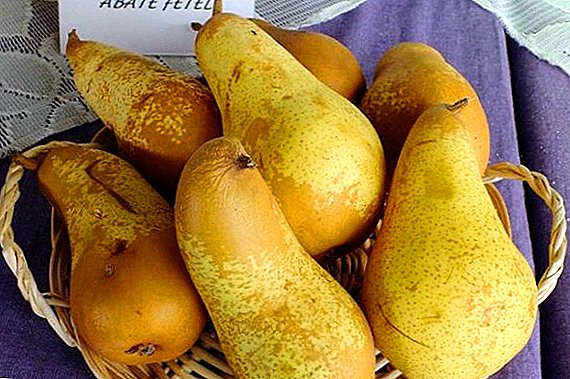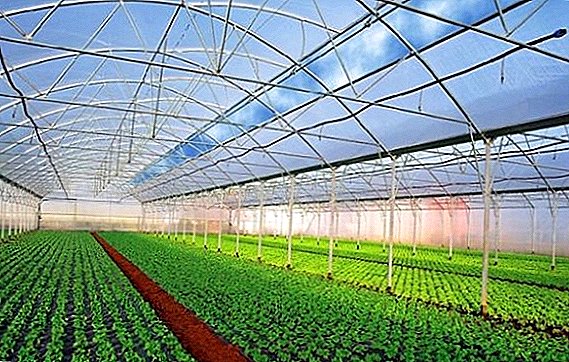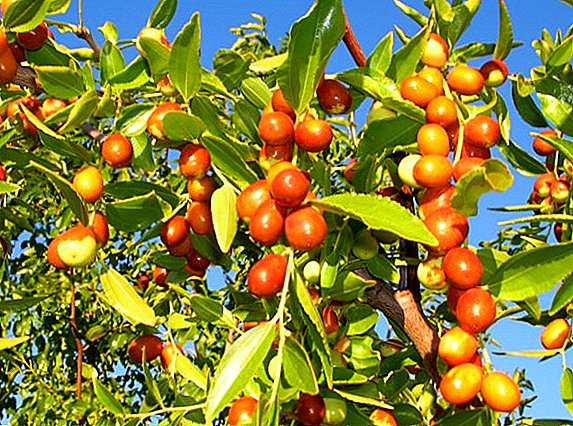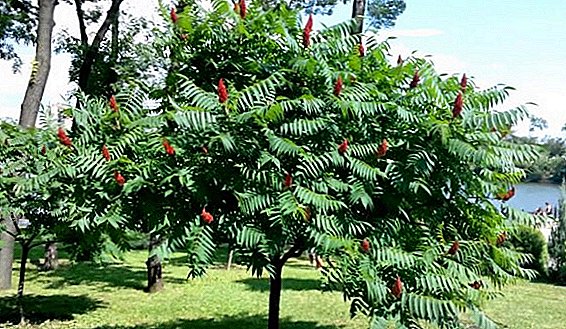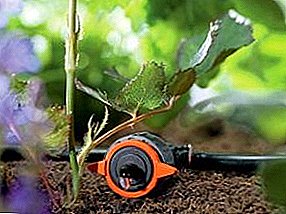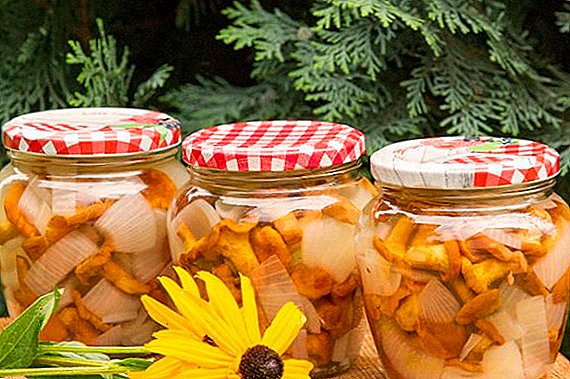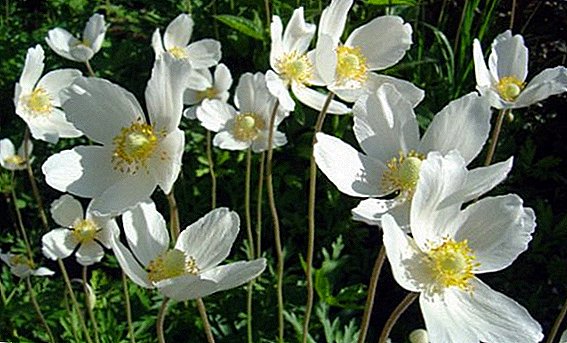 Anemone nemorosa, or, as it is also called, an anemone, is a plant that is often used in medicine as a cure for a number of diseases. The flower gradually disappears in nature, so it was added to the Red Book. This is due to the fact that it has remarkable decorative qualities, which is why it is often disrupted. And since the flower is very fragile, after it is torn down, the root system also collapses. It resembles a snowdrop, as it looks very gentle and sweet and sways even from a weak whiff of the wind. It begins to bloom in early spring and is a sign of the onset of real heat. Further in the article we will take a closer look at the anemone Dubravnaya, provide a description of the external characteristics with photos and tell you how to grow this wonderful spring flower at home.
Anemone nemorosa, or, as it is also called, an anemone, is a plant that is often used in medicine as a cure for a number of diseases. The flower gradually disappears in nature, so it was added to the Red Book. This is due to the fact that it has remarkable decorative qualities, which is why it is often disrupted. And since the flower is very fragile, after it is torn down, the root system also collapses. It resembles a snowdrop, as it looks very gentle and sweet and sways even from a weak whiff of the wind. It begins to bloom in early spring and is a sign of the onset of real heat. Further in the article we will take a closer look at the anemone Dubravnaya, provide a description of the external characteristics with photos and tell you how to grow this wonderful spring flower at home.
Botanical description
An anemone has a straight stem, which can grow up to 20 cm in height. The leaves are divided into three parts. At the end of the stem, a single white flower is formed, sometimes pink and light gray shades can also be found.
Anemone flowers usually have six petals. Flowering occurs around April and lasts until May. In June, the fruit is formed, which has many seeds inside the seed box.  Today, there are many varieties of oak anemone that can be grown on home garden plots. These flowers can decorate lawns and flower beds.
Today, there are many varieties of oak anemone that can be grown on home garden plots. These flowers can decorate lawns and flower beds.
Some varieties differ semi-double and double flowers. Buds can be purple, blue and even red. If you provide a plant decent care, it can bloom in the third year of growth in a new place.
Anemone is also known for its healing properties, thanks to which it has been used in traditional medicine.Anemone roots are horizontal and strongly expanding. In this regard, many additional young bushes are formed.
If you do not interfere with the plant, it will create a large beautiful flower thickets. In the first decades of summer, the part located above the ground dies.
Habitats
The plant is an anemone of the forest dwelling in the forest zone of the Mediterranean, Western Europe and the European part of Russia.  Anemone spreads in broadleaf types of forests, less common in spruce-leaved. If the flower was seen in the spruce forest, then this will be evidence that oaks previously grew here, which were later replaced by fir trees.
Anemone spreads in broadleaf types of forests, less common in spruce-leaved. If the flower was seen in the spruce forest, then this will be evidence that oaks previously grew here, which were later replaced by fir trees.
Did you know? The name of anemones in Greek means "daughter of the winds". Once it was believed that anemone flowers open and close due to the action of the wind. Of course, over time, this theory was not confirmed, after the plant was observed. Today it is believed that the name of the flower was due to its fragility and sensitivity. Even at the slightest breeze of the breeze, the plant swings from side to side, and the petals of the flowers begin to flutter and can even crumble.
Choosing a place to grow
For the cultivation of an artificial anemone attractive for its external characteristics, as well as the period and duration of flowering. The flower gives its beauty when the other ornamental plants in the garden only wake up after wintering.  In addition, the anemone is a perennial, which allows it to please the eye of the grower for ten years, and even longer. A very pleasant addition is also the fact that the anemone is resistant to diseases and pests. The latter is due to the fact that the flower is poisonous and does not have to taste like harmful bugs and various insects.
In addition, the anemone is a perennial, which allows it to please the eye of the grower for ten years, and even longer. A very pleasant addition is also the fact that the anemone is resistant to diseases and pests. The latter is due to the fact that the flower is poisonous and does not have to taste like harmful bugs and various insects.
Anemone nemorosa flower prefers light, but slightly shaded areas of the garden. Expose it to scorching direct sunlight is not worth it. The best option would be a place under the wide crowns of trees.  It is desirable to provide the soil of sandy type, wet and humus. At the same time, it is necessary to keep the soil moist during the whole season, even after the upper part of the plant has died. Also, the land should be loose and fertile.
It is desirable to provide the soil of sandy type, wet and humus. At the same time, it is necessary to keep the soil moist during the whole season, even after the upper part of the plant has died. Also, the land should be loose and fertile. Did you know? In the mythology of ancient Greece, it was believed that anemone - these are the tears of Aphrodite. There are also legends in which anemones were called Adonis blood drops.
Planting anemone
At home, to grow an anemone from the seeds will be quite difficult. So it is better to resort to the method of dividing the bush. After digging the bushes will be well divided into parts. The division should be practiced in July, when not all the leaves will finally die out.  When planting, it is not necessary to deepen the flowers unnecessarily into the ground, a depth of about 5 cm, maximum - 8-10 cm. Watering plants now is also not worth it.
When planting, it is not necessary to deepen the flowers unnecessarily into the ground, a depth of about 5 cm, maximum - 8-10 cm. Watering plants now is also not worth it.
Also in the process of planting anemones you need to ensure that the root neck is located at ground level. Anemone is usually quite easy to get accustomed to the new site.
If it was decided to sow the seeds, it is advisable to do this before winter.  Spring sowing is also allowed, but only with the observance of preliminary cold stratification. The first seedlings can be seen in 15-20 days. Seedlings can give flowering in the second year.
Spring sowing is also allowed, but only with the observance of preliminary cold stratification. The first seedlings can be seen in 15-20 days. Seedlings can give flowering in the second year.
We advise you to learn how to grow anemone in the open field.
Care features
It is very easy to care for this forest plant listed in the Red Book.
The first thing to talk about watering. It is very important to moisturize the soil under the plant during the period when there is an active growth of flowers, as well as their budding.  At the same time we should not carry out weeding, because the roots of the anemone are very close to the surface. Remove weeds should be after the water is fully absorbed into the ground, it should be done only manually and with extreme caution.
At the same time we should not carry out weeding, because the roots of the anemone are very close to the surface. Remove weeds should be after the water is fully absorbed into the ground, it should be done only manually and with extreme caution.
Important! It is necessary to monitor the condition of the soil, since excessive moisture and waterlogging will cause rotting of the roots and tubers of the oakwood anemone.Experienced growers recommend mulching the soil around the anemones with fallen leaves. In this way, it will be possible to retain moisture after irrigation for a while, and also to give the plants additional nutrition.
It is also worth knowing that the anemones are quite drought-resistant, so if the gardener will not be able to water the flowers on his own, they may well lack moisture from the rain.  It will only be necessary to feed the plants with fertilizers one or two years after planting. In this case, the use of manure is unacceptable, since it will be disastrous for anemones.
It will only be necessary to feed the plants with fertilizers one or two years after planting. In this case, the use of manure is unacceptable, since it will be disastrous for anemones.
Organic liquid fertilizer is best suited. Make them should be at the stage of budding flowers.
As for the complex mineral fertilizers, they are introduced at the stage of anemone flowering. But it is also impossible to “overfeed” the flowers, since in this case they will lose the buds.
For winter, it is better to dig up the anemone and place it in containers with moistened sand or peat. These boxes should be stored in a dark and slightly cool place, for example, in the basement or cellar.  From time to time peat or sand will need to be watered so that the plant tubers will not dry out. If the planted plants are not planned to be dug out, then they will need to be sprinkled with sand, peat and compost, and covered with leaves over the top.
From time to time peat or sand will need to be watered so that the plant tubers will not dry out. If the planted plants are not planned to be dug out, then they will need to be sprinkled with sand, peat and compost, and covered with leaves over the top.
In early spring, a greenhouse can be constructed over the plot, which will help stimulate the growth of new shoots.
Beneficial features
Due to the fact that the wood anemone contains a large amount of vitamin C, saponin, alkaloids, organic acids and other elements, the plant has many healing properties.
- Antifungal. Able to detrimental effect on various fungal formations.
- Sedative. It soothes and also has an antispasmodic effect.
- Painkiller Removes or lowers pain.
- Expectorant. Reduces the viscosity of sputum and helps their rapid removal.
- Bactericidal. It can neutralize the action of pathogens of various kinds of infectious diseases.
- Sudorific. Increases the body's ability to excrete salts and toxins.
 Based on the various healing characteristics of anemones, they are included in the composition of medicines for migraine, eczema, rheumatism, dermatitis, purulent wounds, gout, as well as sexual weakness of women and men.
Based on the various healing characteristics of anemones, they are included in the composition of medicines for migraine, eczema, rheumatism, dermatitis, purulent wounds, gout, as well as sexual weakness of women and men.You will also be interested to learn about the cultivation of ornamental plants such as ageratum, celosia, jascoli, saberweed, mountaineer, perilla.
But at the same time it is important to remember that pure anemone is poisonous! Use drugs in which there is such a plant, as well as the use of tinctures from anemones is necessary only after consulting a doctor and only in limited quantities.
Anemone for further use is collected at the stage of its flowering, and then dried in a shady area under temperature conditions not exceeding 40 ° C. After that, the dried plant can be stored for no longer than a year in glass jars.
Important! Infusions of anemones should not be used by women during pregnancy (fraught with interruption), as well as during lactation. Also, do not use infusions in the presence of inflammation of the kidneys.Among other things, the oak anemone is very interesting for beekeepers. This is due to the fact that the delicate and delicate aroma of anemone is able to attract various insects, including bees.
Anemone nemorosa is considered a harbinger of real spring. It is tender and fragile, but at the same time very much loved by many growers. She does not require any special care, so even an amateur gardener can grow it on her plot.




